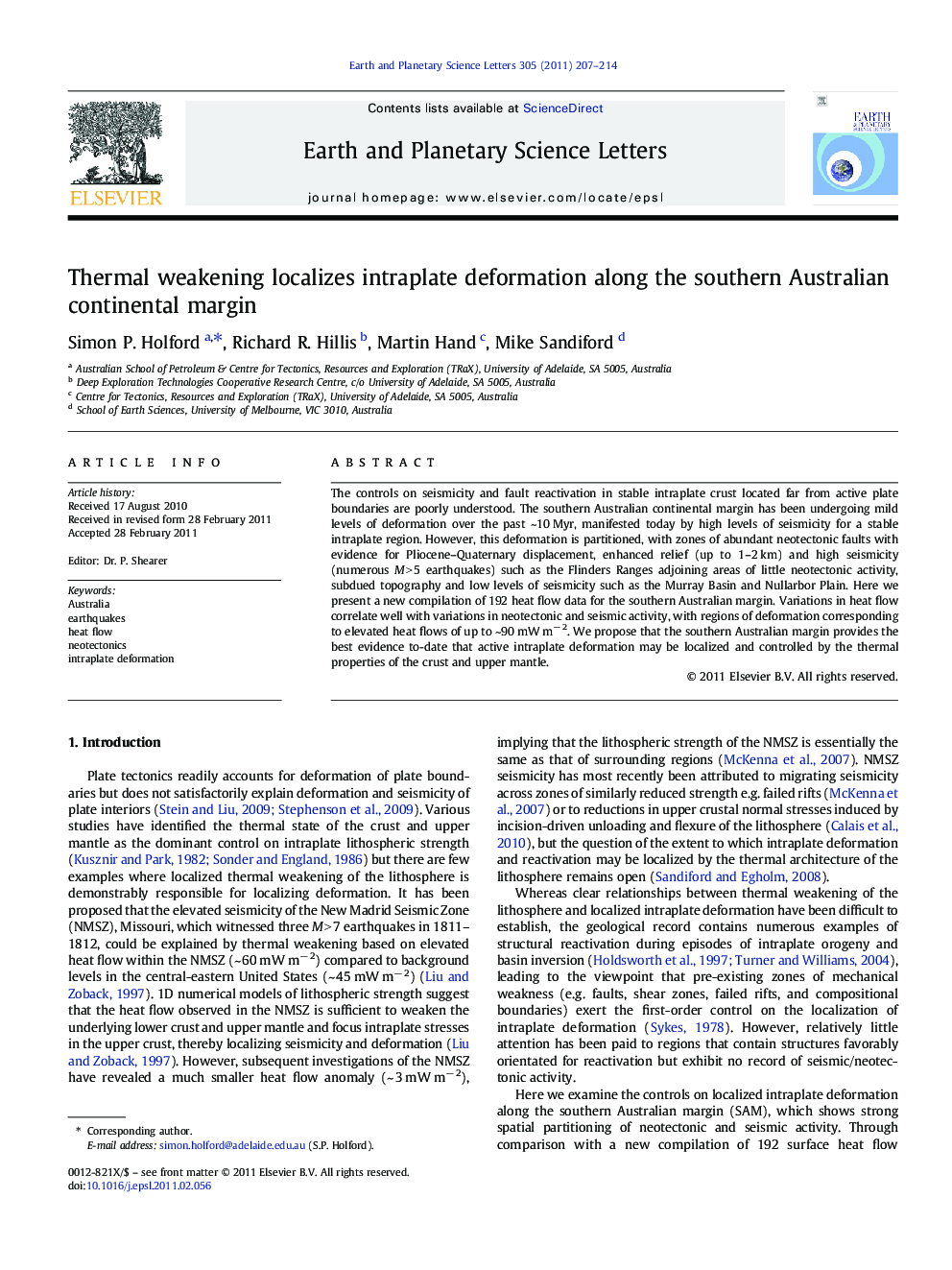| Article ID | Journal | Published Year | Pages | File Type |
|---|---|---|---|---|
| 4677966 | Earth and Planetary Science Letters | 2011 | 8 Pages |
The controls on seismicity and fault reactivation in stable intraplate crust located far from active plate boundaries are poorly understood. The southern Australian continental margin has been undergoing mild levels of deformation over the past ~10 Myr, manifested today by high levels of seismicity for a stable intraplate region. However, this deformation is partitioned, with zones of abundant neotectonic faults with evidence for Pliocene–Quaternary displacement, enhanced relief (up to 1–2 km) and high seismicity (numerous M > 5 earthquakes) such as the Flinders Ranges adjoining areas of little neotectonic activity, subdued topography and low levels of seismicity such as the Murray Basin and Nullarbor Plain. Here we present a new compilation of 192 heat flow data for the southern Australian margin. Variations in heat flow correlate well with variations in neotectonic and seismic activity, with regions of deformation corresponding to elevated heat flows of up to ~90 mW m− 2. We propose that the southern Australian margin provides the best evidence to-date that active intraplate deformation may be localized and controlled by the thermal properties of the crust and upper mantle.
Research highlights► Short-term (e.g. historical seismicity) and long-term (e.g. neotectonic faulting) deformation of the southern Australian margin is markedly partitioned. ► A new compilation of heat flow measurements reveals spatial correlations between zones of elevated heat flow and enhanced intraplate deformation. ► Active intraplate deformation of the southern Australian margin is localized and controlled by the thermal properties of the crust and upper mantle.
